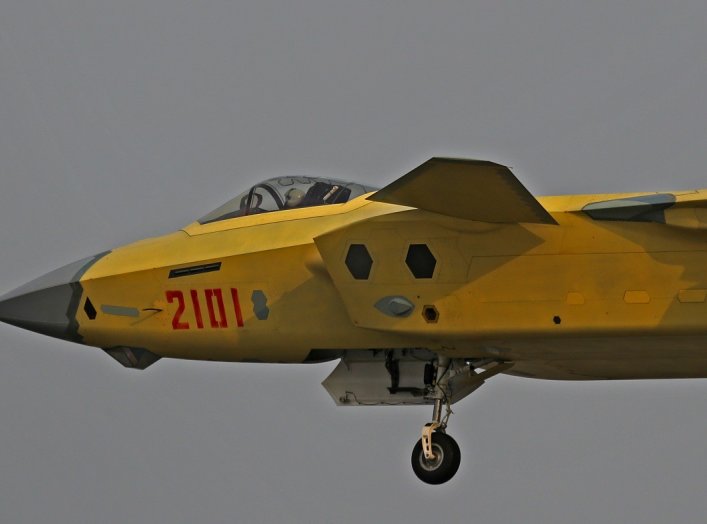
The Chinese military is building up a meaningful force of J-20 stealth fighters, Y-20 strategic airlifters and other high-tech military aircraft while also developing a new stealth fighter, fighter-bomber and heavy bomber.
But for all of these advancements, Chinese industry still is struggling to manufacture arguably the most important subsystems for these new planes. Their engines.
Aviation website Alert 5 spotted a stock-exchange filing by the Hebei subsidiary of China’s Central Iron & Steel Research Institute. The filing including production projections for military engines for the next decade, and reveals some startling shortfalls.
Production and development gaps could result in the latest Chinese warplanes flying with older engine models, including imported Russian motors that might be underpowered and unreliable. The mismatch between airframes and engines could be a drag on the overall performance of Chinese military aircraft.
Perhaps the biggest shortfall is in the production of WS-15s and WS-19s, the custom motors respectively for J-20 stealth fighters and FC-31 export stealth fighters. “Data provided by Hebei Cisri Dekai Technology Co. Ltd. shows a maximum of only five WS-15 and WS-19 engines each year from 2020 ‘til 2026,” Alert 5 reported.
The first few combat-capable J-20s reportedly entered service in 2017. Flight Global’s survey of all the world’s military aircraft for 2020 listed 15 J-20s in front-line use. J-20s usually appear in public with Russian-made AL-31 motors, which experts consider to be inadequate for the heavy, long-range, supersonic fighter.
Even the up-rated 117S version of the AL-31F “would likely not be sufficient to extract the full performance potential of this advanced airframe,” wrote Carlo Kopp and Peter Goon, analysts with the Air Power Australia think tank.
A dearth of WS-15s could force J-20 regiments to continue flying with AL-31s. Meanwhile it could be difficult for Chinese industry to find buyers for the FC-31 if the plane lacks a custom engine. Prototype FC-31s fly with what appear to be Russian-made RD-93s.
Chinese industry has been trying to develop the WS-18 engine for heavy subsonic aircraft. The type could power Y-20 airlifters and H-6K bombers. But Hebei “is running into trouble with development,” Alert 5 reported. Work on the new turbofan is “half-suspended as the company researches into new materials.”
“Another alternative engine for the Y-20, the WS-20, will also enter limited production starting from 2024,” Alert 5 explained. But for now, the Y-20 and H-6K fly with Russian D-30 turbofans.
The D-30 however is a low-bypass model that’s better suited for supersonic fighters than for an efficient, slow-flying cargo-hauler.
Troubles with the WS-15, WS-19 and WS-18 should worry Chinese military planners. Shortfalls could prevent new aircraft types from performing to their maximum potential. Beijing perhaps should worry the most about a new “sixth-generation” stealth fighter that Chinese officials want to develop in order eventually to replace the J-20.
As demanding as the J-20 is on its engines, a successor fighter likely would be even more demanding.
The H-20 stealth bomber that’s reportedly under development likewise probably cannot adequately perform with the same hand-me-down motors that power the Chinese military’s current heavy aircraft. For the next generation of warplanes, China needs custom engines.
But it’s not impossible for Chinese industry to overcome engine-development problems or to scale up production.
The WS-10 engine, which powers older J-10, J-11, J-15, J-16 fighters, “is having a successful production run,” Alert 5 explained. The stock filing anticipated production of 320 WS-10s in 2020 and 450 engines in 2026.
It’s unclear whether, and when, the Chinese military might solve its engine problems. But there’s strong incentive for Beijing to devote vast resources to solutions, especially when it comes to the WS-15 and WS-19.
“If the technological barrier of a fighter engine is overcome, China will be able to produce advanced fighters indigenously,” said Arthur Ding, a professor at Taiwan’s National Chengchi University. “And, along with other capable aircraft, such as airborne early-warning and air-refuelling aircraft, the Asian Pacific’s political landscape will be changed, as China’s military capability can win over countries in this region.”


No comments:
Post a Comment